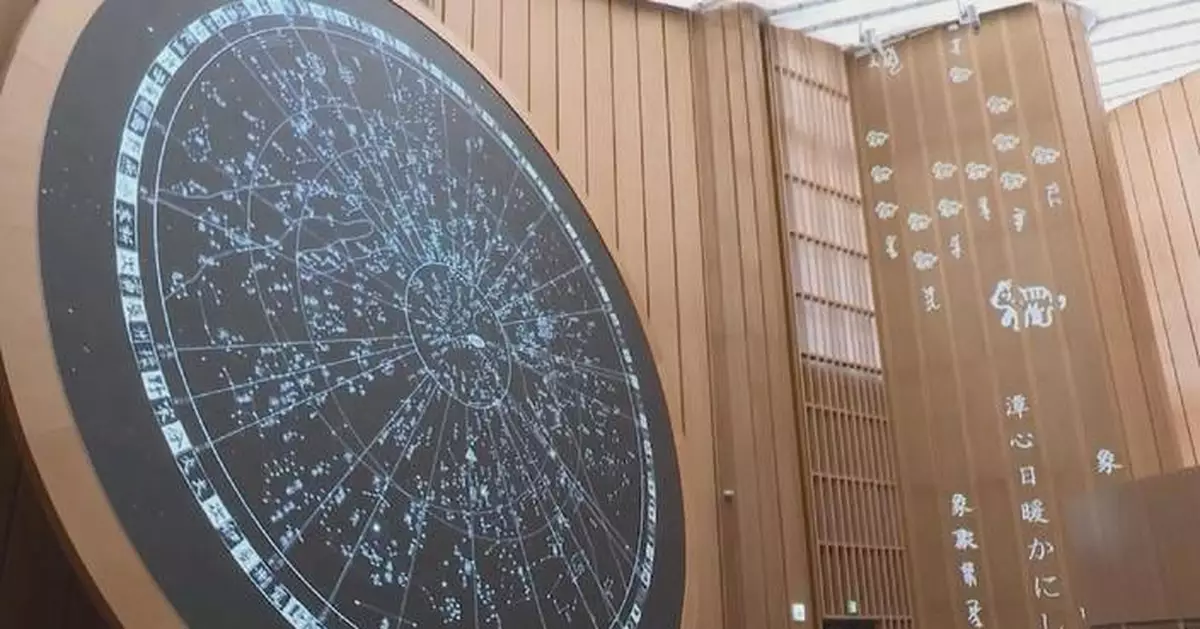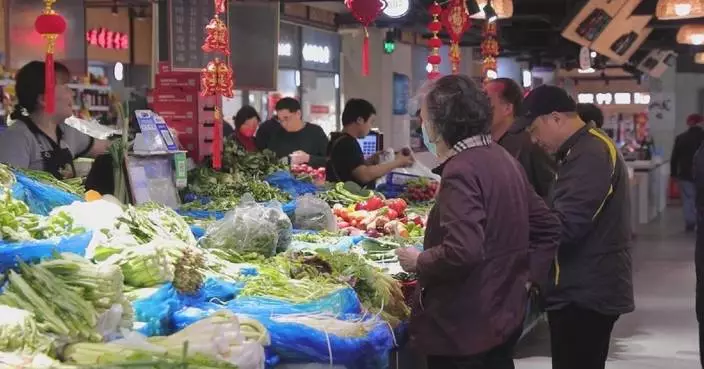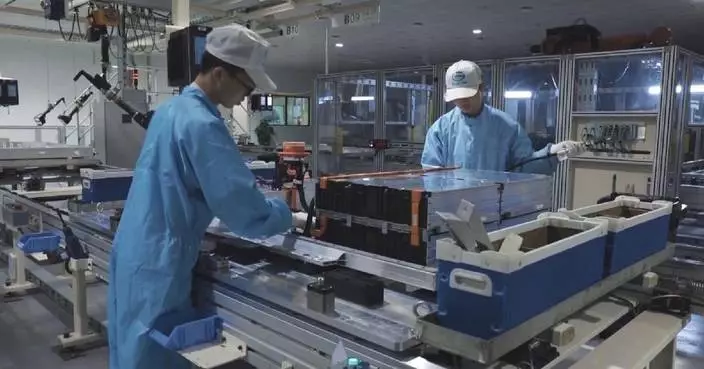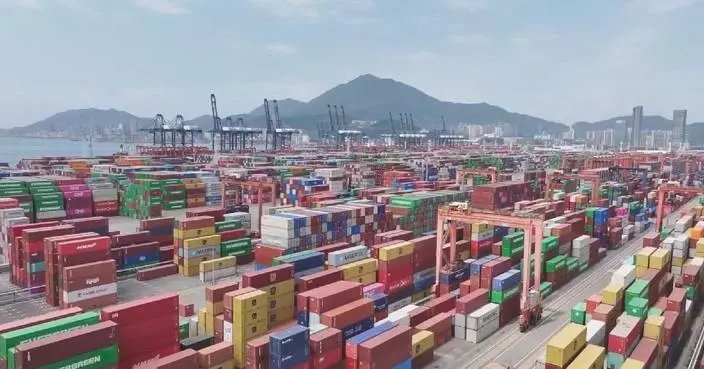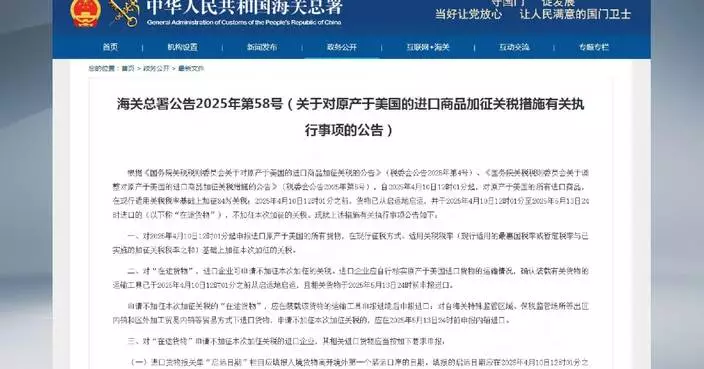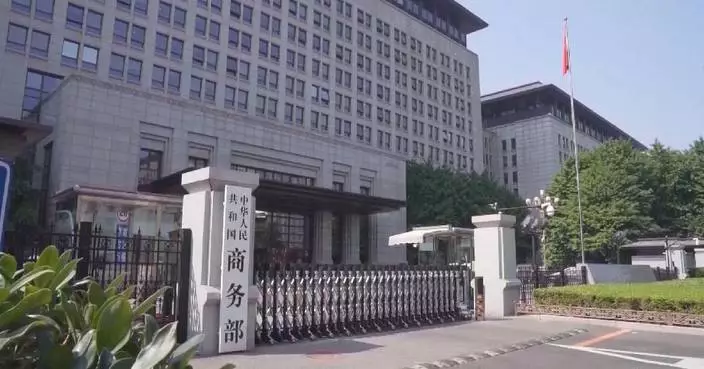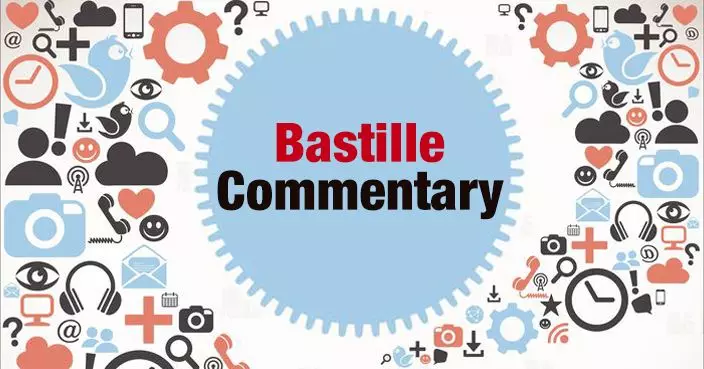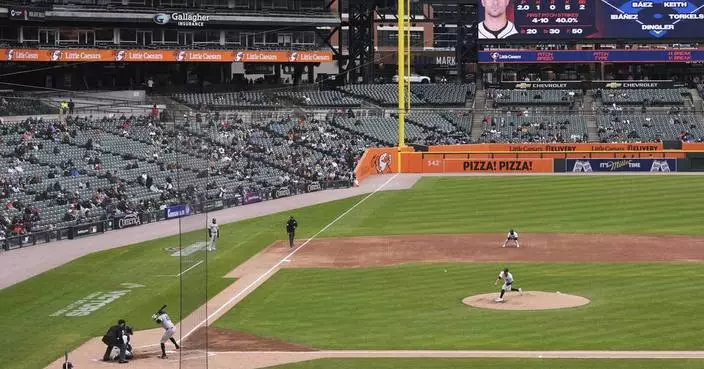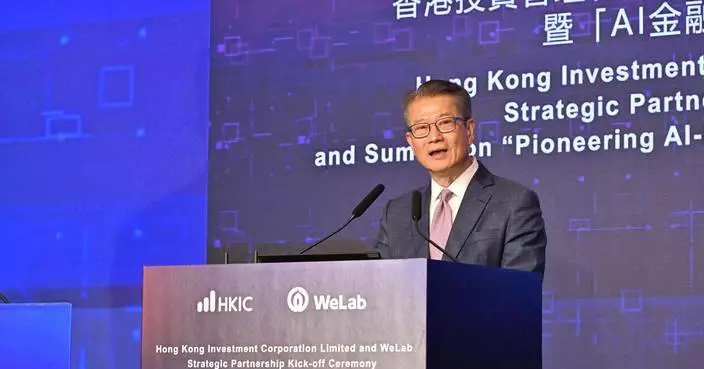The China Pavilion at the 2025 Osaka Expo, which will open to the public by next Sunday, welcomed media visits on Monday, sharing sneak peeks highlighting the integration of Chinese philosophy and modern technologies.
As one of the largest foreign self-built facilities at the Osaka Expo, the China Pavilion has adopted the theme "Building a Community of Life for Man and Nature – Future Society of Green Development."
The pavilion consists of three components themed "past, contemporary, and future" respectively, featuring an integration of traditional Chinese philosophic norms and the modern sustainable development principles.
The first section of "Tian Ren He Yi," or the "Harmony Between Mankind and Nature," features traditional Chinese culture and history. The exhibited installations include a digital "waterfall of characters" demonstrating the Chinese writing system's evolution, with the introduction of Jieqi, or 24 solar terms on China's traditional lunisolar calendar that demonstrates the understanding of ancient Chinese people to the nature.
The highlights of the section are exhibitions of ancient Chinese archeological sites, including Sanxingdui in southwest China's Sichuan Province, Liangzhu in east China's Zhejiang Province, and Yinxu in central China's Henan Province, dating back to three to five thousand years ago. Replicas of cultural relics from the three sites are presented in the pavilion, among them are the earliest water conservancy system from the Liangzhu archeological site, and the mysterious Bronze Divine Tree from Sanxingdui.
"This is a replica of the Bronze Divine Tree made in the Shang Dynasty (1600BC-1046BC). It is among the earliest and largest single-piece bronze artifacts discovered in the world so far. Other exhibits here include the bronze standing figure with an animal-shaped hat, and the bronze mask. With a touch on the screen, we can learn about details of the cultural relics by examining their 3D models in an immersive way. And we also provide trilingual introductions for visitors from around the world to know about the relics," said a docent of the China Pavilion.
The second section, named after China's contemporary green development principle of preserving "Lucid Waters and Lush Mountains," presents descriptions of China's natural and cultural landscapes, ecological systems, and achievements in urban management.
Exhibits in the second section include introductions of China's national parks, and the two mega-sized ecological projects, the Dujiangyan Water Conservancy Project, which was initially built over two thousand years ago and which has been maintained and upgraded since then, and the Three-North Shelterbelt Forest Program, one of world's largest afforestation projects.
In the third section of future developments, a model of China's Jiaolong submersible and exhibits of China's aerospace science projects share with the viewers China's spirit of exploration of the unknown.

China Pavilion of 2025 Osaka Expo opens to media for sneak peeks
European industrial leaders and exhibitors at the ongoing Bauma 2025 in Munich voiced mounting concerns over the latest U.S. tariff policies, warning that they could disrupt global supply chains and undermine strategic cooperation.
During the week-long world’s leading trade fair for construction machinery, many industrial insiders pointed out that the newly expanded tariffs encompass an extensive range of products and come with a sharp hike in rates, which are likely to disrupt market dynamics and supply chain resilience in the global engineering machinery industry.
Many analysts believe that the geopolitical considerations behind these policies have become increasingly prominent, further intensifying the strategic uncertainties that European enterprises face in the global market.
"I believe that these tariffs are not good for the market, because at the end it will be bad not only for Europe but also for the State in the long period. I believe that the market should be regulated by innovation, by a nice competition and with competition that is based on the technological race, not with an artificial thing that is coming in the market and is creating problem for all the Europe," said Claudio Ancetti, an Italian expert on construction machinery industry.
The United States market accounts for roughly 10 to 13 percent of Germany’s total exports in recent years, and is one of the largest single export markets for Germany's construction machinery industry. Therefore, the impact of changes in tariff policies on the entire industry is obvious.
Germany's mechanical engineering industry association VDMA has issued a warning, stating that the extensive punitive tariffs imposed by the Trump administration will cause serious damage on both sides of the Atlantic. Not only will they fail to solve the bilateral trade issues, but they will also trigger a spiral confrontation of mutual barriers.
Furthermore, the U.S. manufacturing industry, in several key technological fields, still highly relies on the supply of mechanical equipment from Europe, especially Germany. For decades, German and European machinery manufacturers have been important partners of the U.S. industrial system, but now, this cooperative chain is facing the risk of being artificially severed.
The damage will not only hit European exporters hard but also seriously impede the process of industrial transformation and upgrading in the United States itself.
"The U.S. tariff policies will certainly cause many destructive impacts. It's not a good thing for people. But we are not directly affected. The victims are the U.S. customers. They have to pay these tariffs and additional fees," said Andreas Diener, a German construction machinery supplier.
Industry insiders also noted that tariffs have shifted from being just a basic trade instrument to becoming an important variable in shaping corporate strategy within today’s highly interconnected global industrial chain.
In addition to calling on major economies to return to rationality and enhance multilateral coordination, the companies are attempting to find stable development anchor points amid the uncertainties of the geo-economic situation by accelerating the adjustment of supply chain layout and deepening cross-regional cooperation.
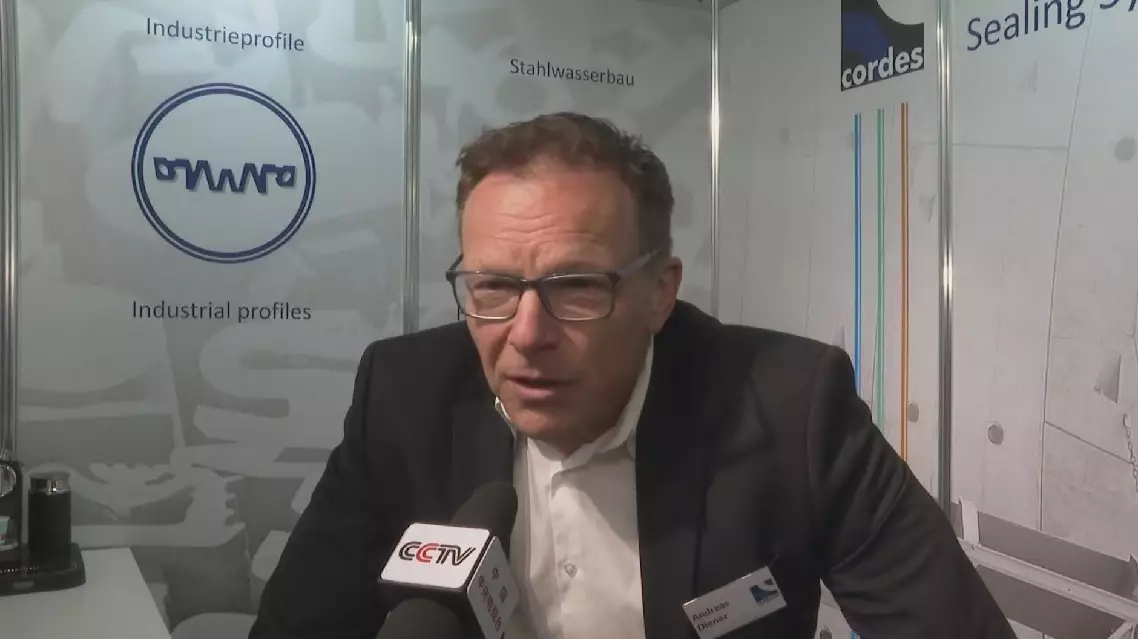
US tariffs threaten transatlantic supply chains: European industry insiders
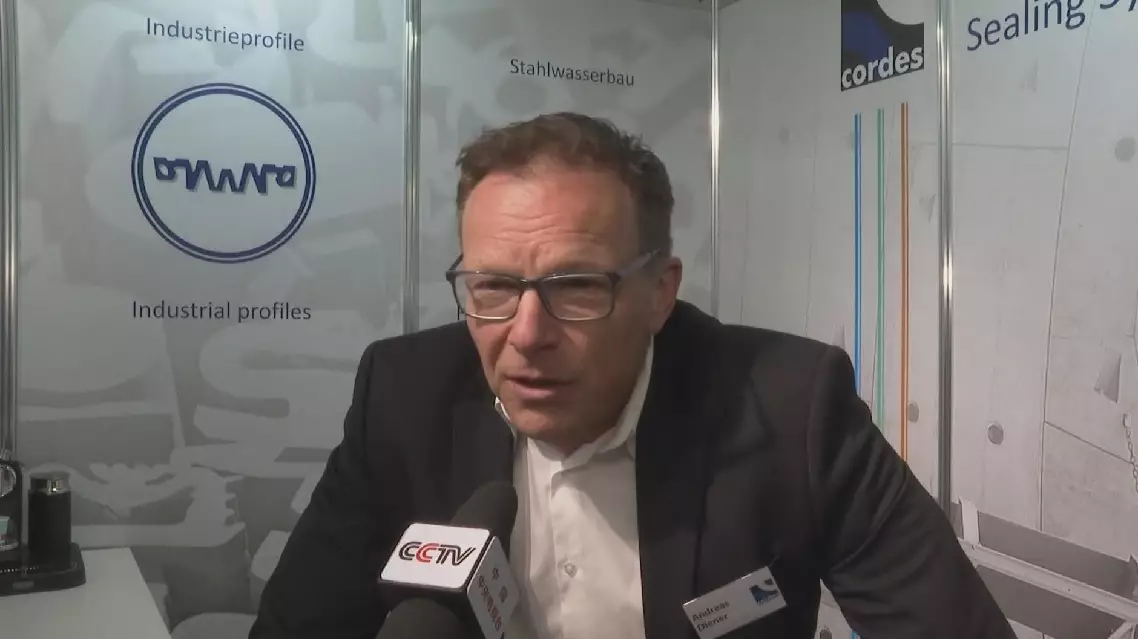
US tariffs threaten transatlantic supply chains: European industry insiders



